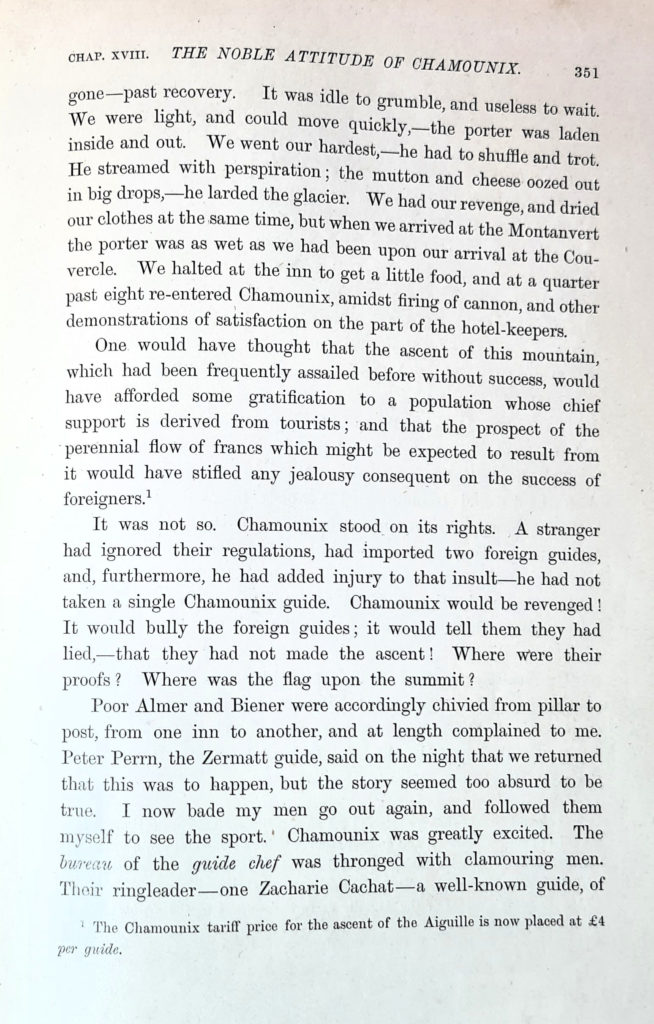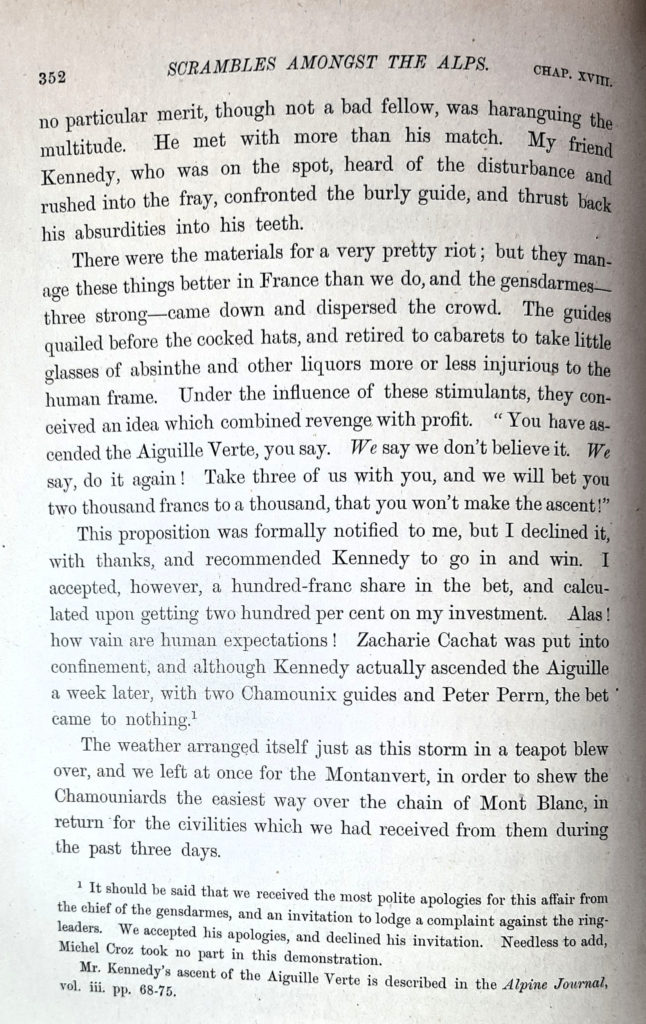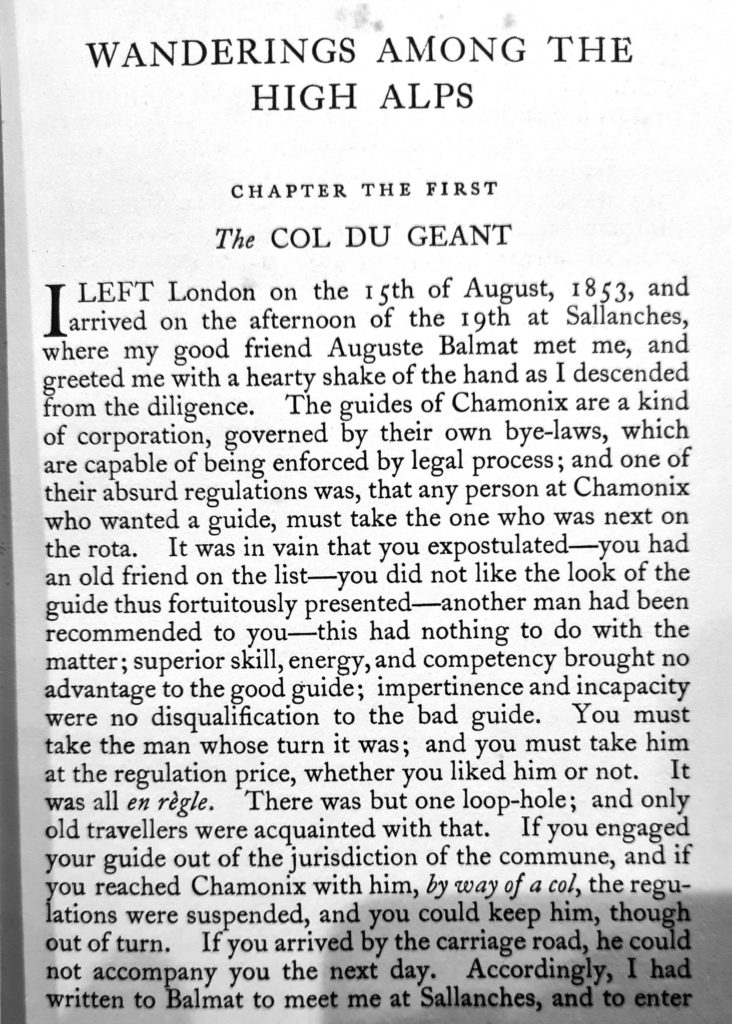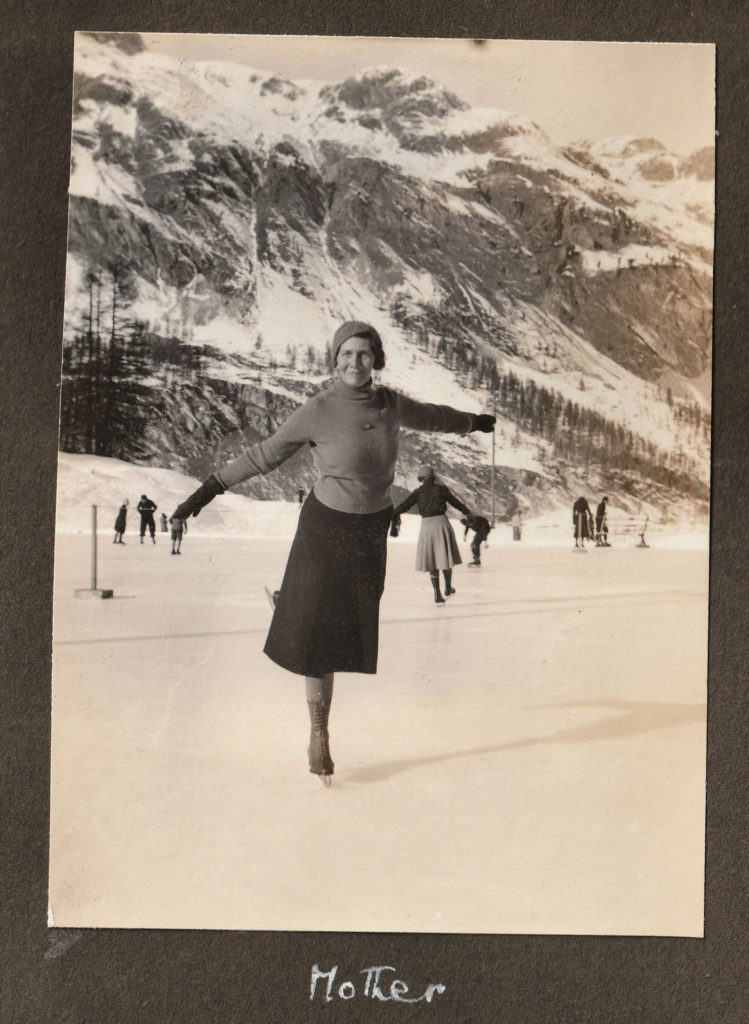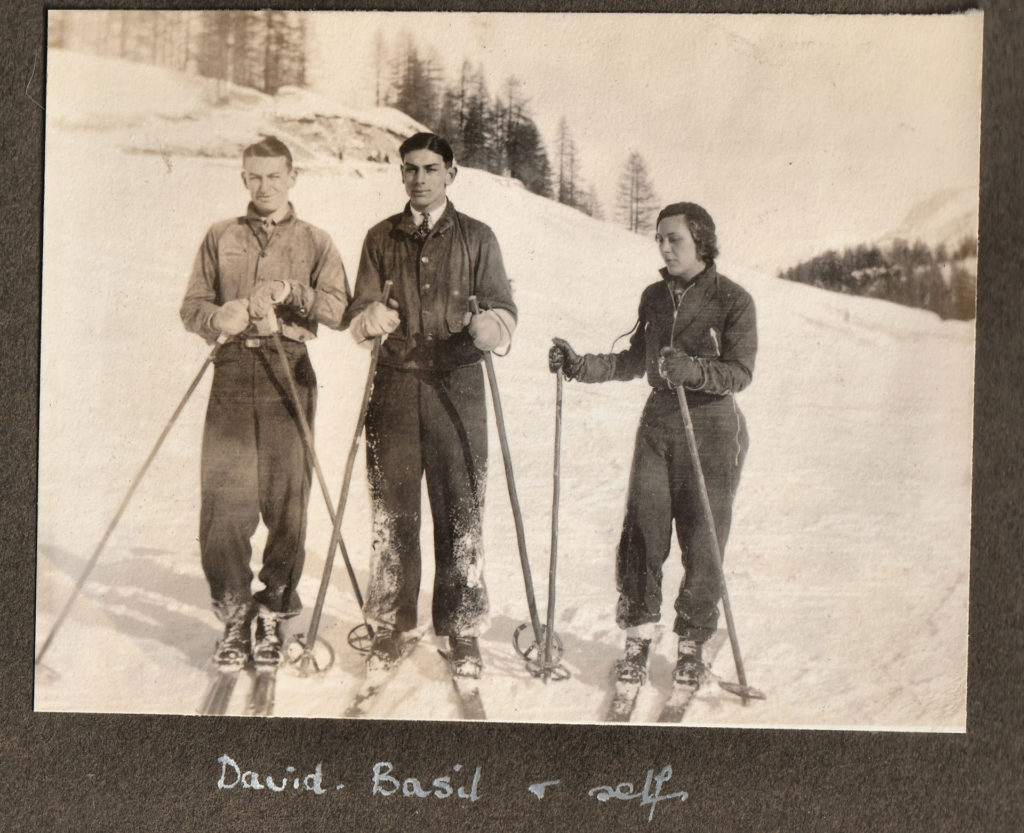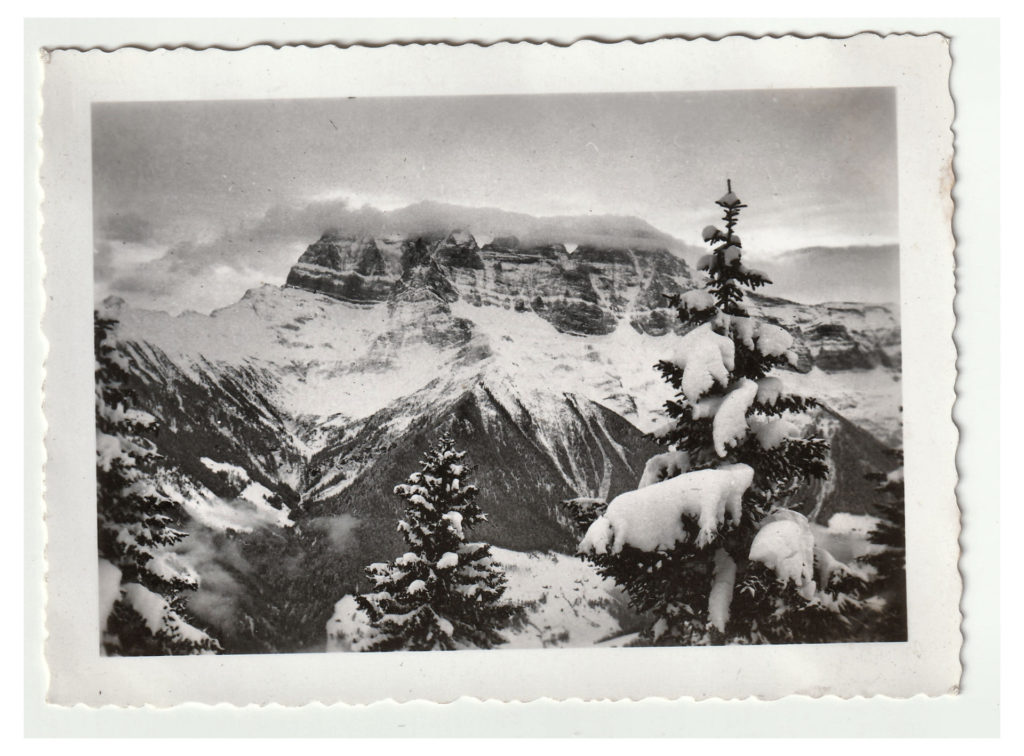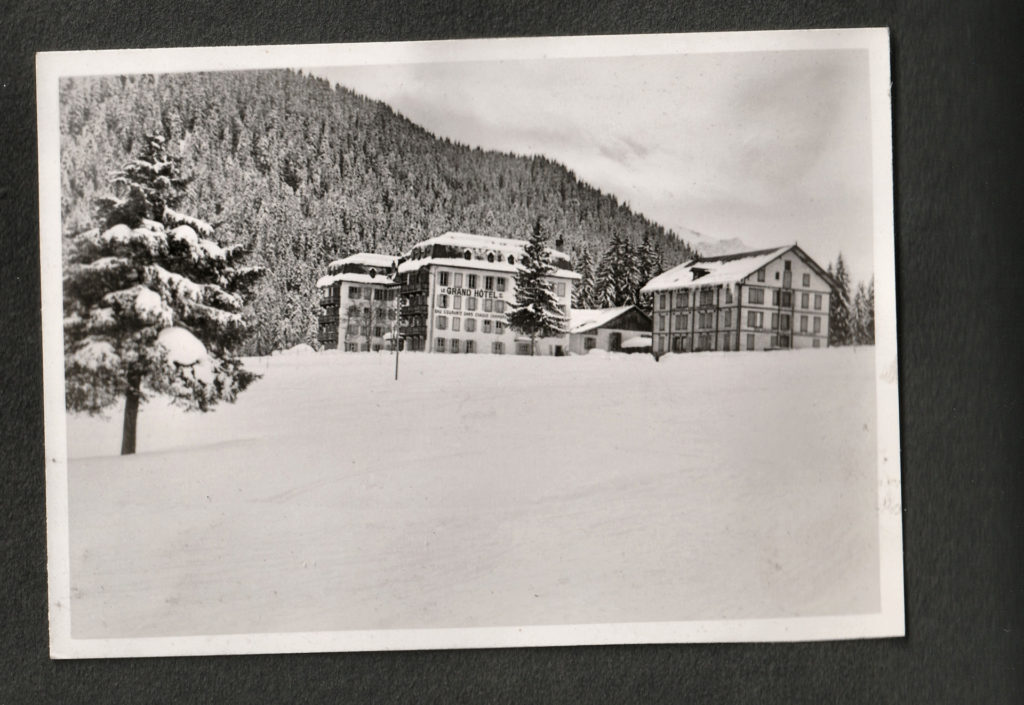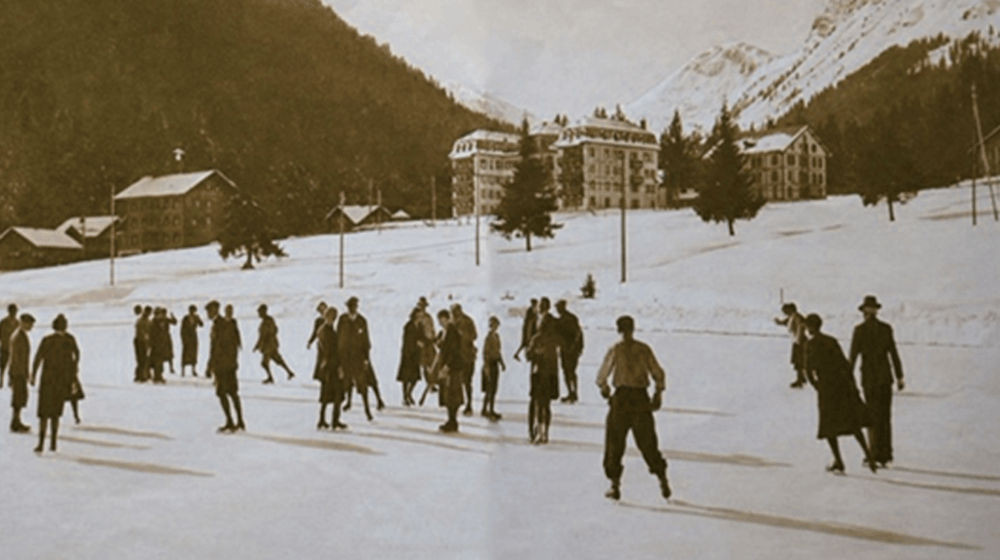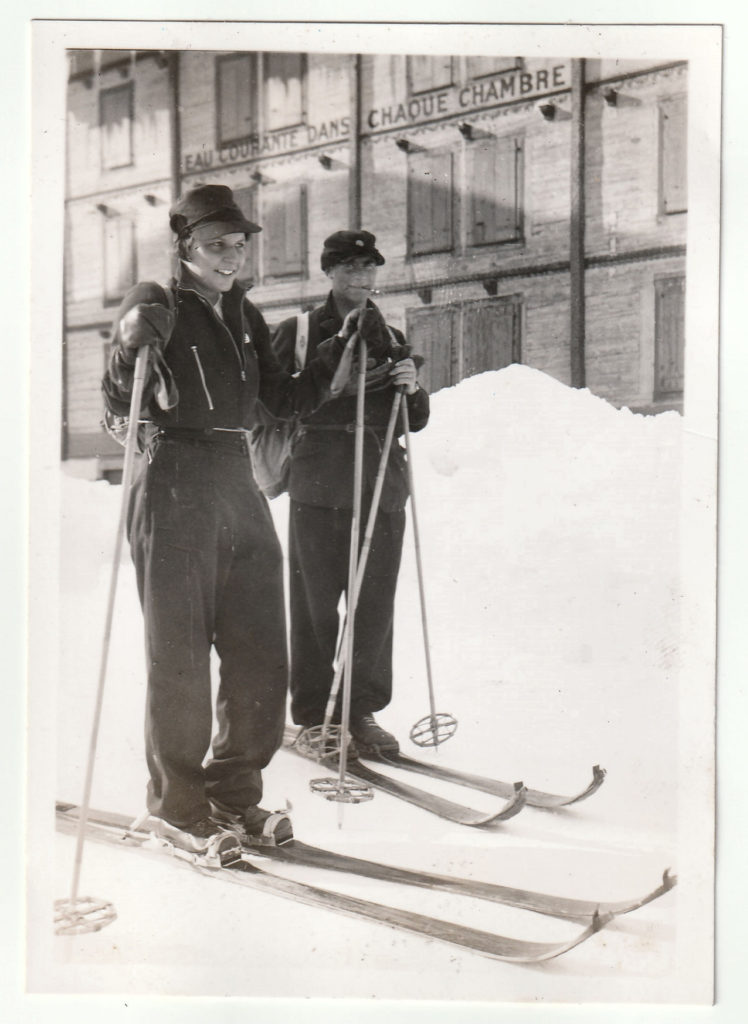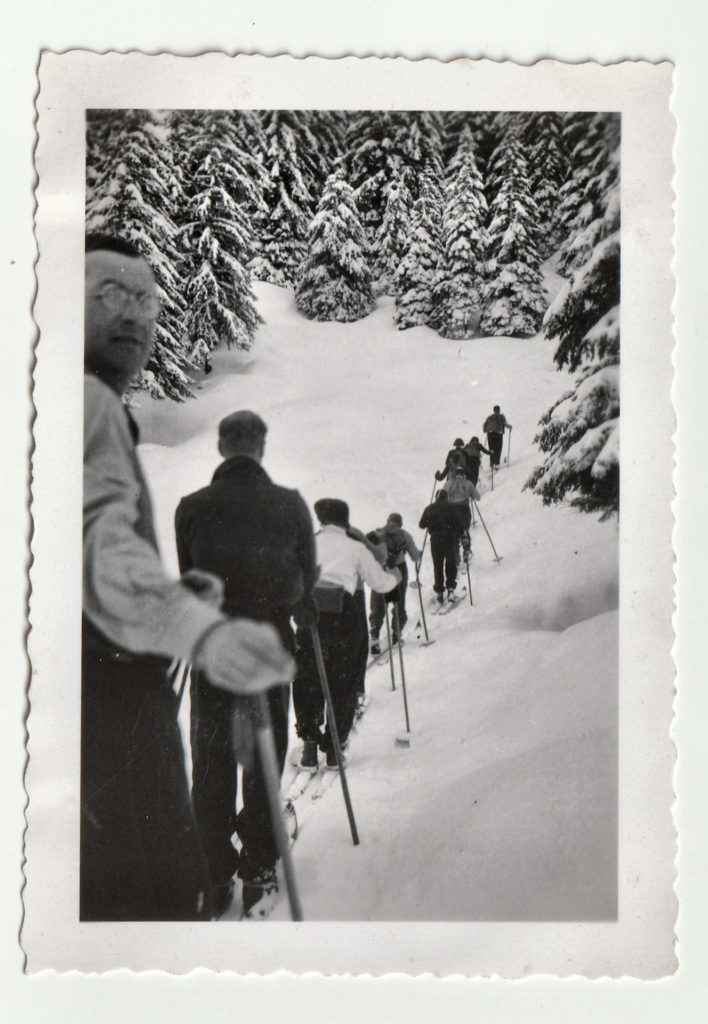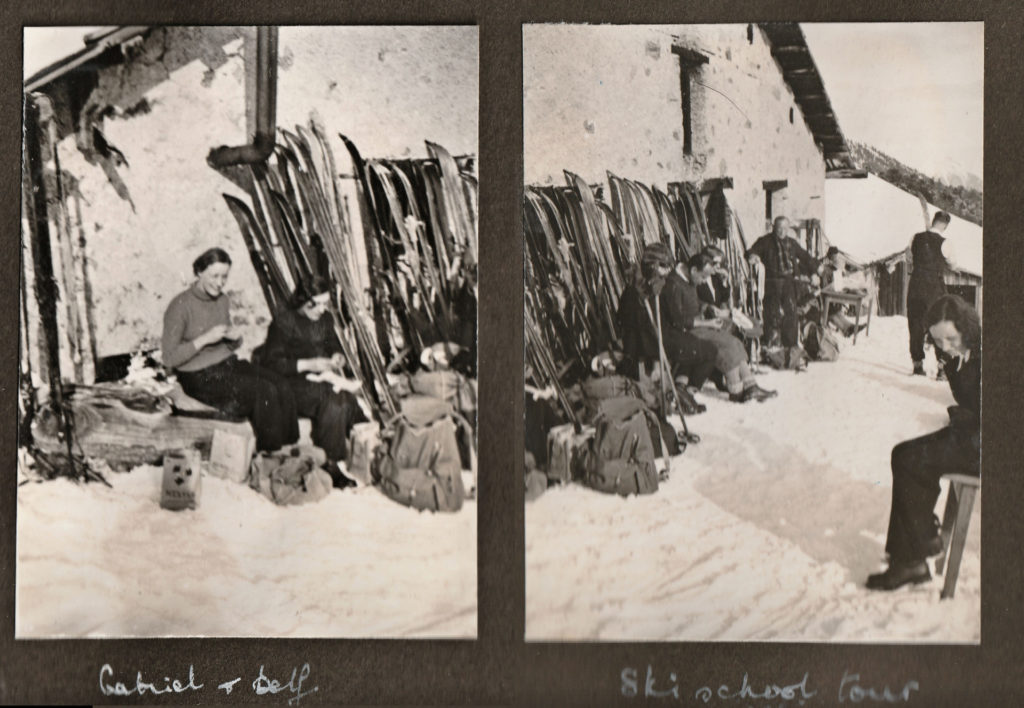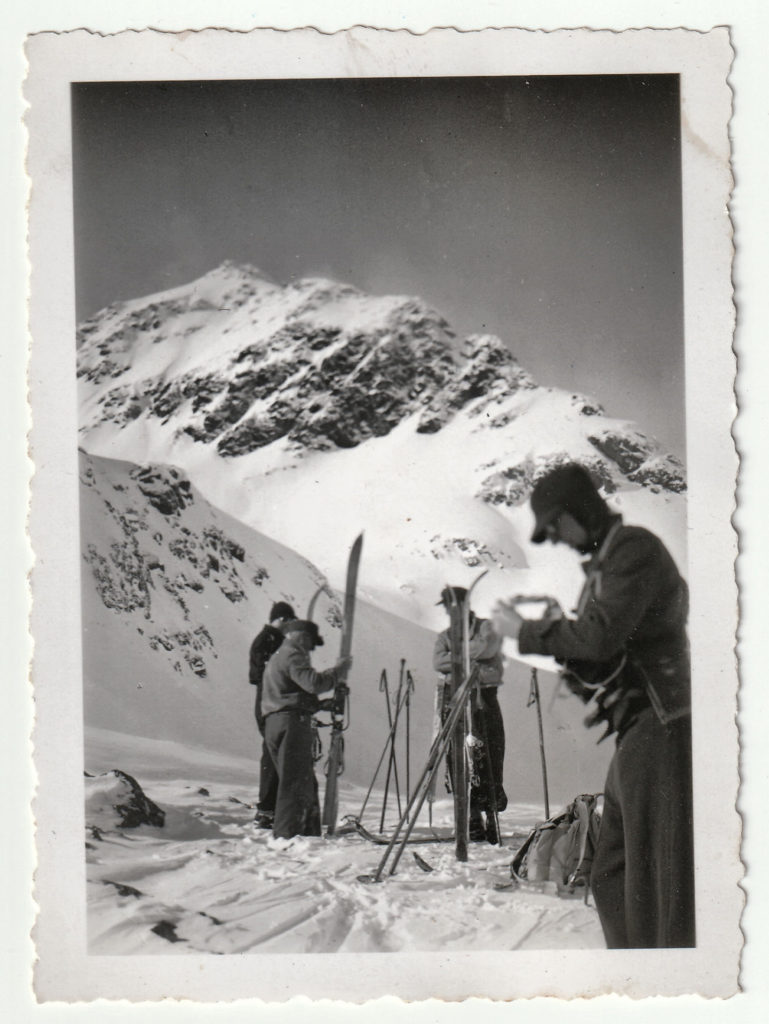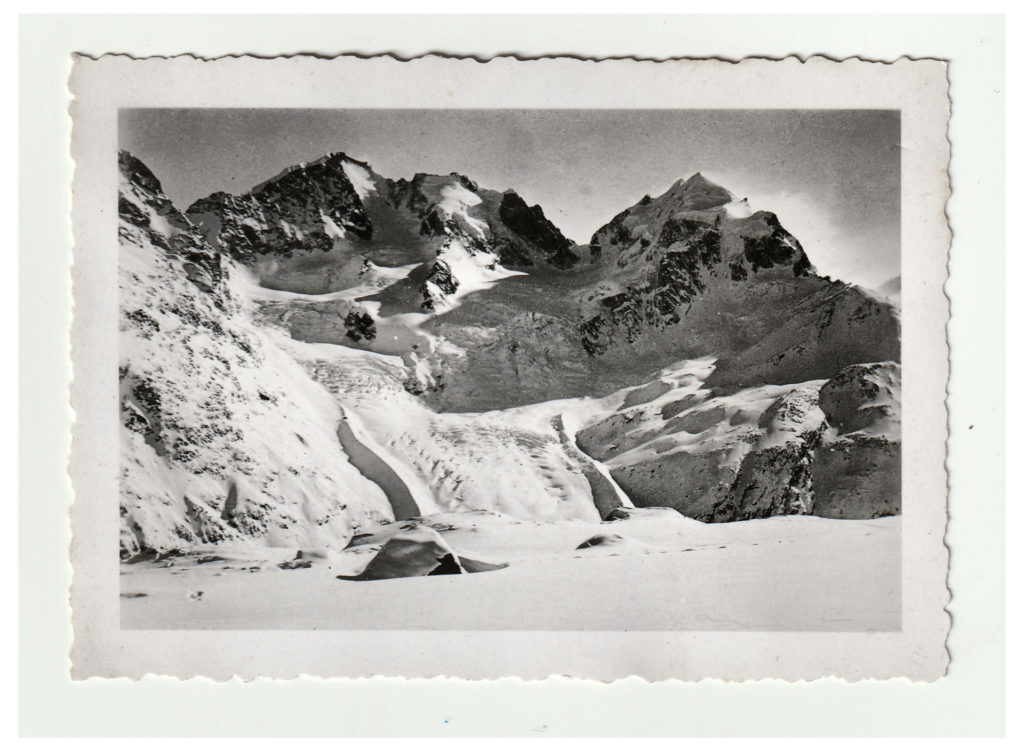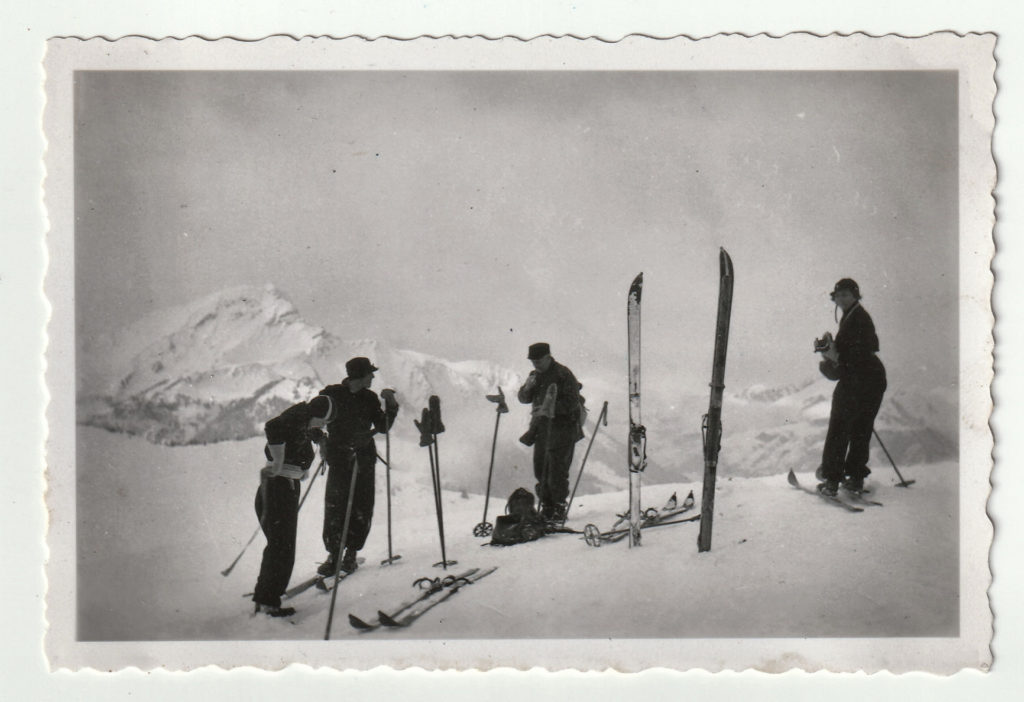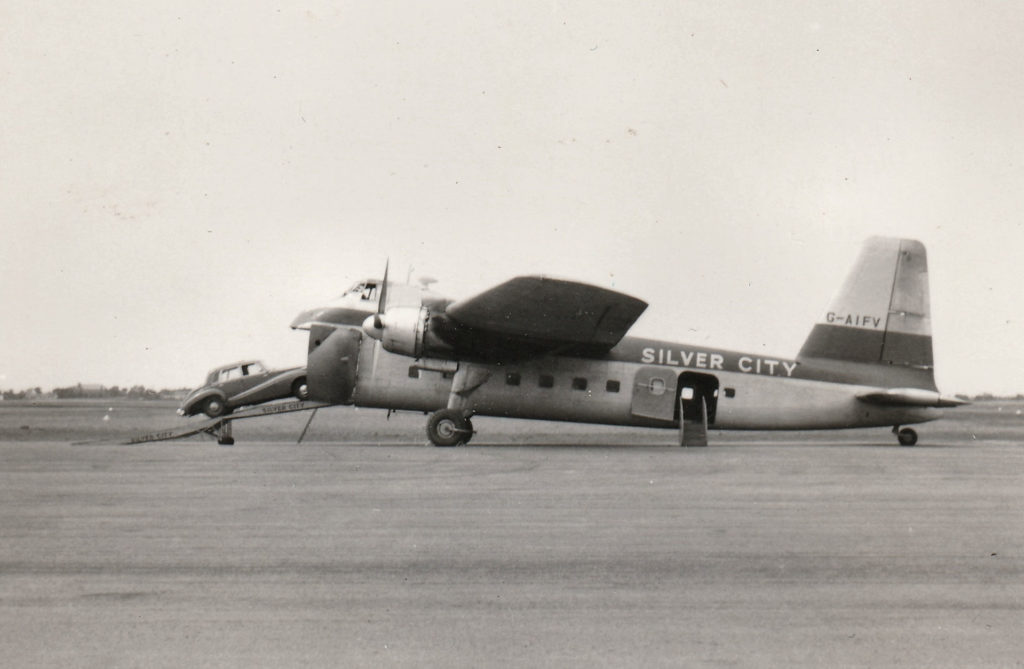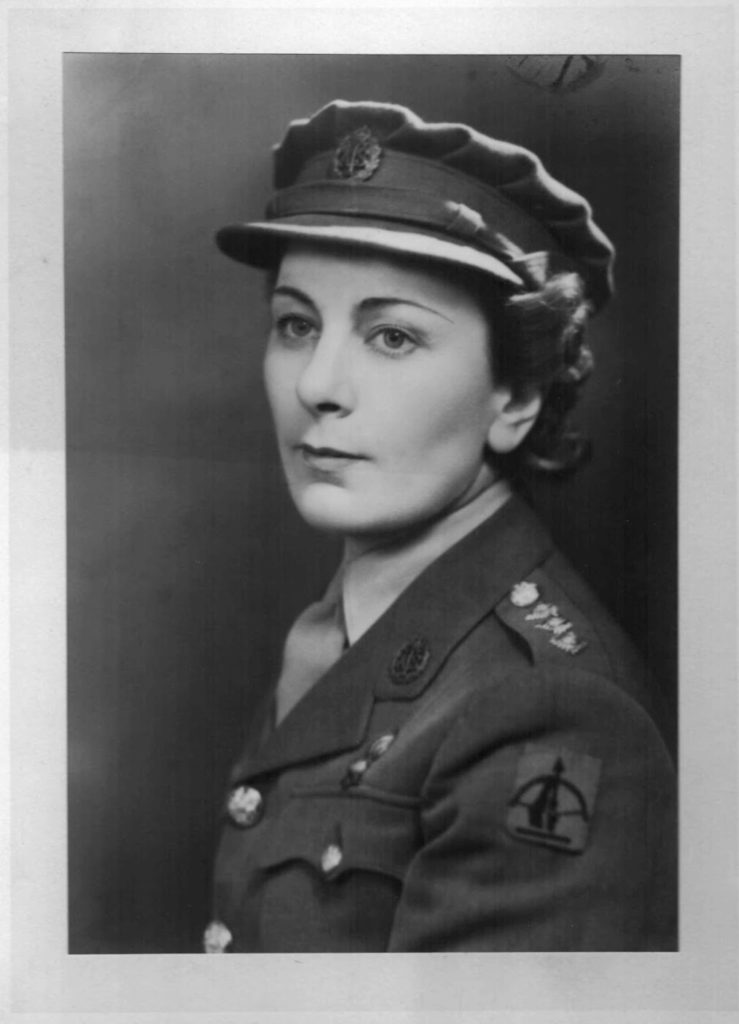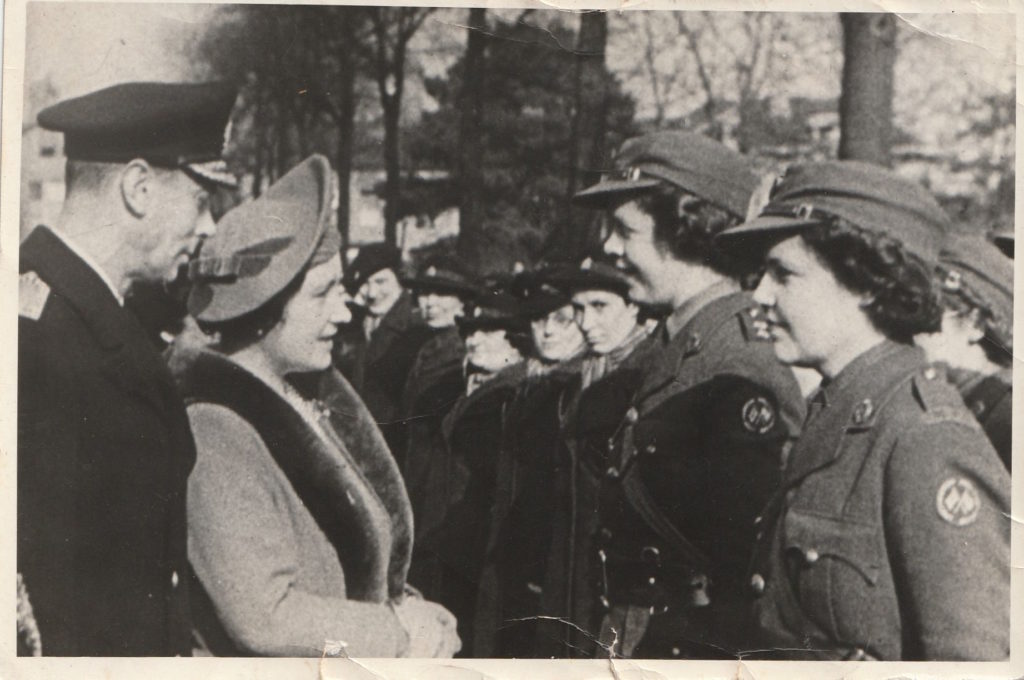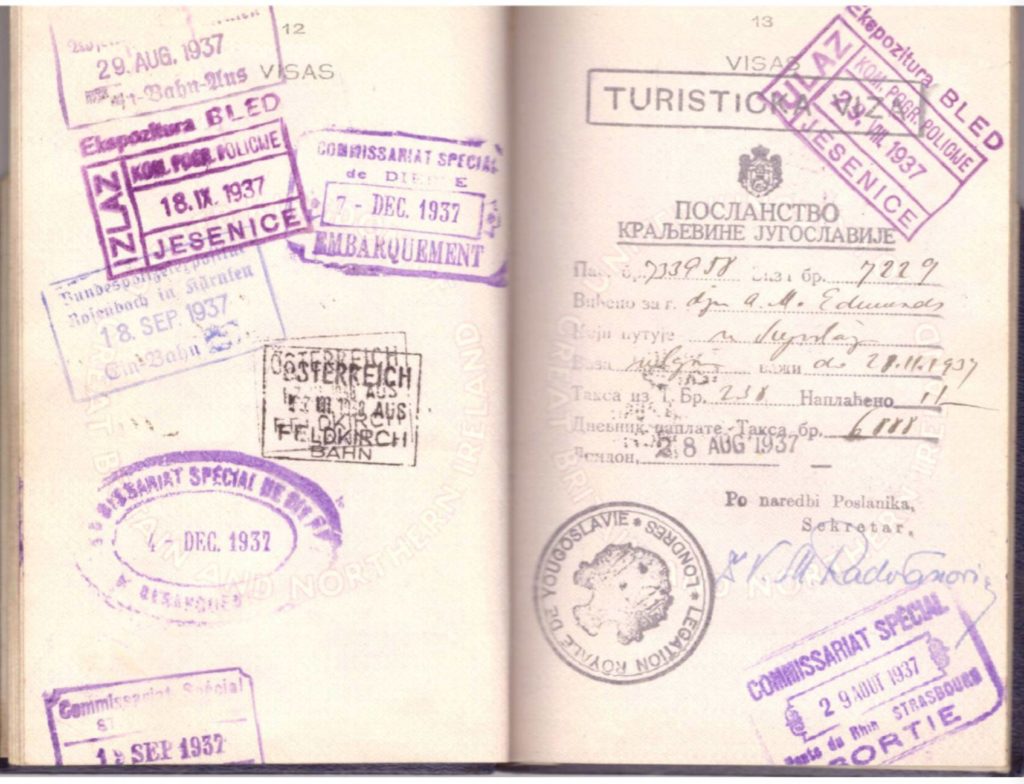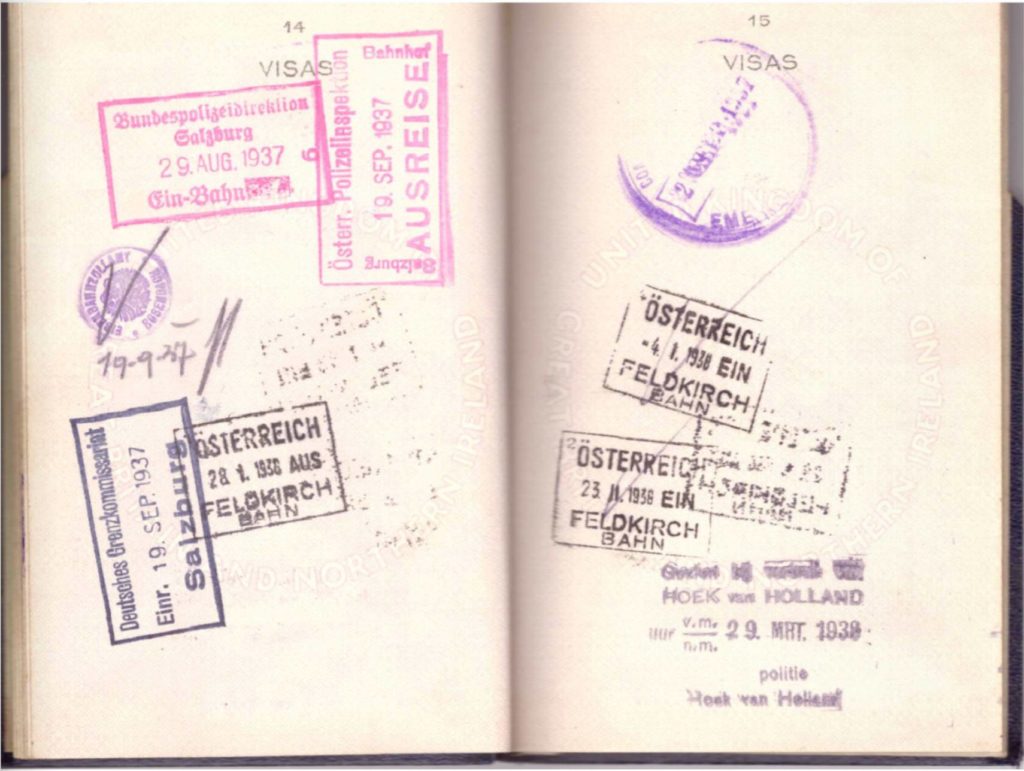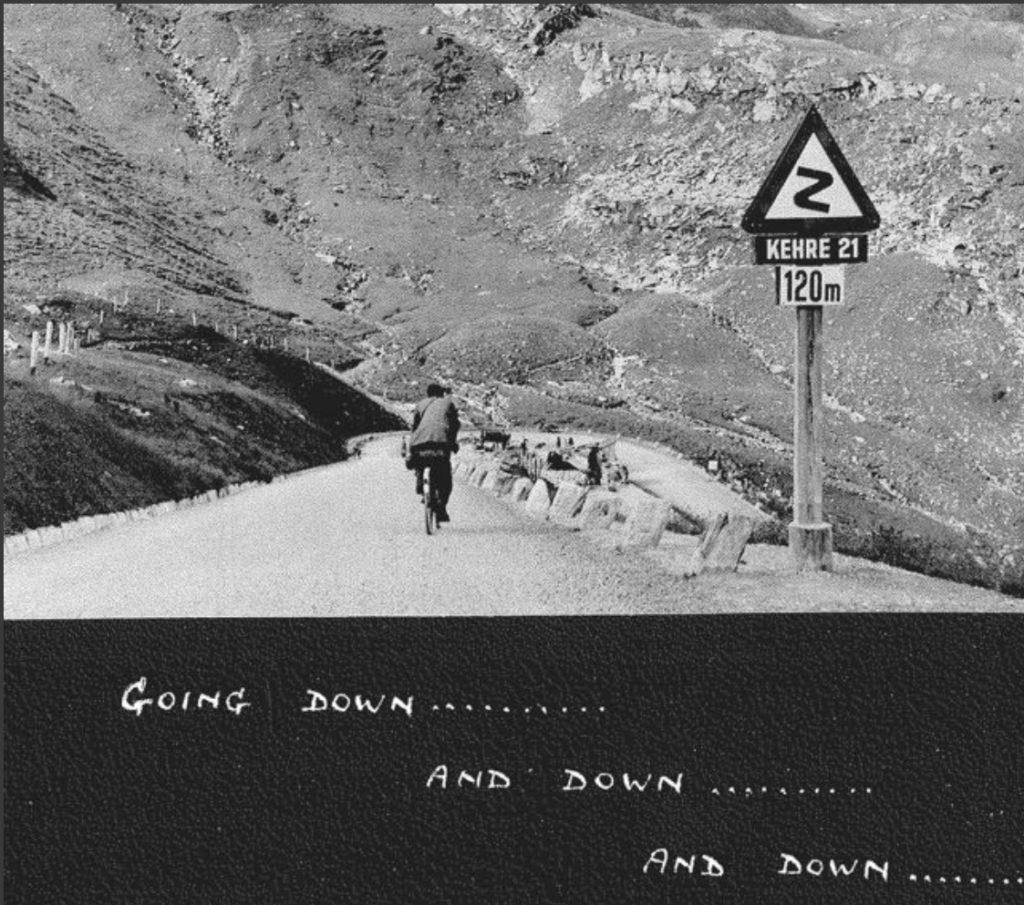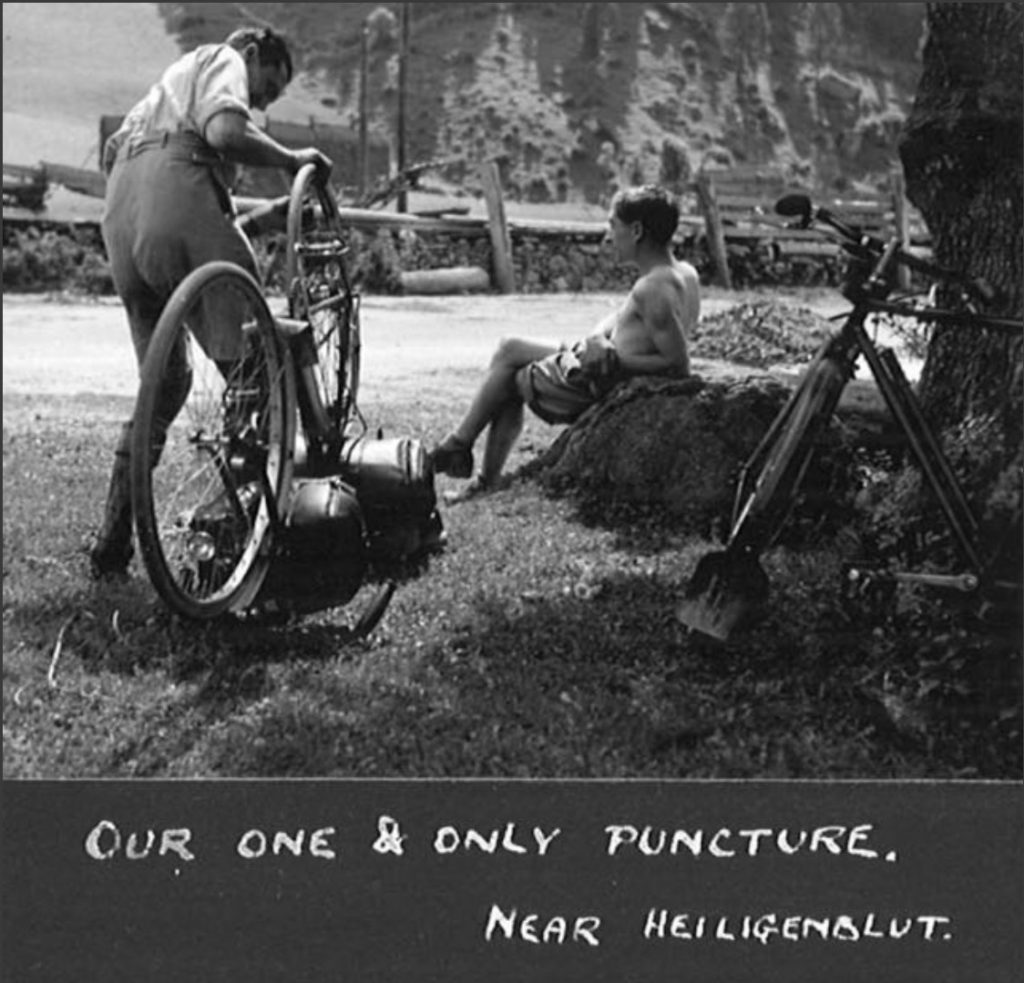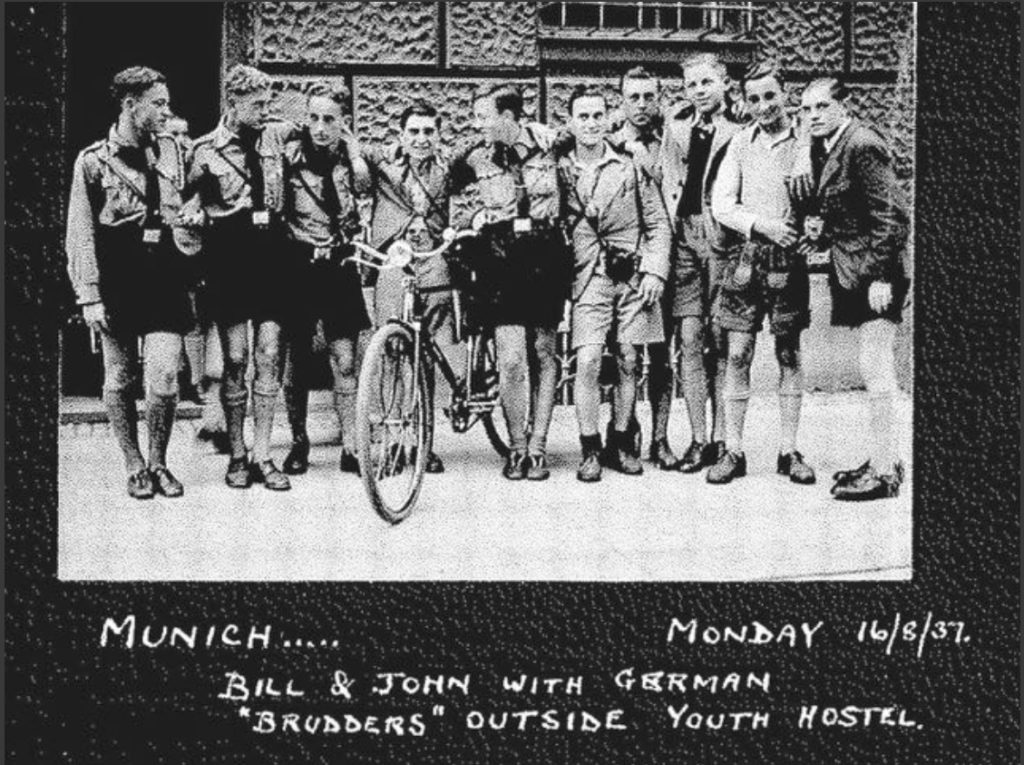This post is also available in: Français (French)
The ski lifts are closed to the public. Hotels only operate on room service. Restaurants are “fermé”. Customs officers are checking for skis when you drive across the French – Swiss border. There is no getting away from this, it is a tricky time for the holiday industry in the Alps.
Holidays to the continent never used to be easy. I have some evidence of this. I’ve collected a couple of books from the late 1800’s that I’ll refer to below, I’ve also raided my Grandmothers holiday snaps from 1934. Holidays were long and expensive voyages. In some respects that might make them more memorable. Keep this in mind when lamenting the current lack of conveniences.
Edward Whymper
Edward Whymper is famous for the first ascent of the Matterhorn in 1865 on his eighth attempt. I have an early copy of his best-seller “Scrambles 1860-69”, Whymper was not a rich man, an engraver, he was first sent to the Alps on a work trip, to document an ascent by others of Mt Plevoux in the Dauphiné, in the end, the ascent failed. The French guide that had been engaged encouraged Whymper to try again, they succeeded and at 20 yrs old, a mountaineer was born. This was before photography became convenient, so these engravings were less art and more documentation. Travelling to the Alps in those days was by train and took days, the cost will have been high. Tourism was not new. The first ascent of Mont Blanc had been in 1786.
I have selected a couple of pages from Scrambles that discuss the Chamonix mountain guides.
Alfred Wills is from the same time. Maybe 10 years ahead of Whymper. Another famous Alpine tourist. He had money though, he was a famous Judge. Famous because he presided over the trial for gross indecency of Oscar Wilde. Wills bought a “chalet” near Samoens, it is still there and still in his family I believe. Way up the valley at 1350m a few kilometres walk from the road head. “Chalets de Fonts”, further up the hill, the Refuge d’Anterne is named after him. In those days Samoens was an obvious choice for a holiday, it was connected by rail into the main network. I have his book, “Wanderings” from 1853.
Below is the first page. A mention of his 4-day journey to Chamonix and like Whymper he took the opportunity to take a dig at the Chamonix guides.
My Grandmother
My Grandmother travelled extensively around Europe in the ’30s. This would have been possible thanks to her wealthy background. The first I knew of it was when visiting her before she died in 2005. She was 94 at the time and not making a whole lot of sense. I told her I was living in the Alps so she asked me where. I said it was close to the French/Swiss border. Her response was to point me towards a drawer and ask that I dig out her photo albums, saying she was sure she’d been skiing near there when she was younger. Her albums were fairly well buried, but I pulled them out and started flicking through them. The pictures were so good I assumed they were a collection of postcards. Thanks to her failed eyesight my Grandmother was unable to guide me through them. I kept turning the pages, not really believing what I was looking at until I started to recognise some of the architecture, I could see the wording on one of the hotels was in French too. And then finally I saw the Dents du Midi, when I saw them I knew it had been taken from above Morgins. Right on my doorstep. I was astounded. These images where dated 1934.
As far as I can find out, the first ski lift in Morgins was the Foilleuse, built in 1958, a single-seat chair lift
https://www.remontees-mecaniques.net/bdd/reportage-tsd3-de-la-foilleuse-wso-stadeli-lift-129.htm
And from the pictures, it was clear that “skiing” in those days meant hiking up the hills. There were no ski lifts at all. The skis were enormous and made from solid wood, the skins they attached to the bottom to give grip to allow uphill movement were made from seal skin.
I can’t help but write a few more lines about my Granny. Since her death we have had a closer look at some of her other papers, we have her passport from the time. Amongst the stamps, it is clear she made half a dozen trips to Austria, Yugoslavia and Switzerland in 1937 & 38. A very “active” time politically for those areas. We can see that she left Austria either on the 7th March 38 or the 17th March 38, so either 5 days before the Anschluss or 5 days after!
https://en.wikipedia.org/wiki/Anschluss#German_troops_march_into_Austria
Beyond mentioning she drove an ambulance, Granny hadn’t spoken much about her time in the war. We found an official photo of her. The officers uniform suggests she did more than drive an ambulance. My uncle recently asked for her war record. It seems that she did indeed start out driving ambulances during the Blitz but then went on to work for various Anti-Aircraft Brigade Groups, then in 1945 she was posted to the CSDIC (Combined Services Detailed Interrogation Centre), Military Intelligence, where we surmise she used her German language skills (Swiss finishing school had its uses). Then towards the end of the war in August 1945 she spent 6 months in Germany with BAOR (British Army of the Rhine). This time overlapped with her time with CSDIC. Exactly what she was up to is classified. Yet another example of the modesty of her generation.
An Alpine cycling tour in 1937
Holidays in the Alps in the inter-war years were not confined to the well off. I recently came across an article written about 3 friends from Middlesbrough and Stockton-on-Tees. They were inspired to take the train to Munich and tour with their bikes through Bavaria, the Austrian Tyrol and the Dolomites. Their pictures are fabulous and can be seen on the link below. Some of these pictures and the pictures of my Granny overlap. Same place, same year!
http://drmarionb.free.fr/1937CyclingTour/Pages/16.html

